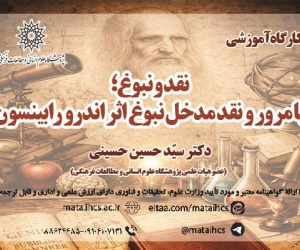Virtual reality (VR) tours and their impact on consumers' intention to visit the physical store (مقاله علمی وزارت علوم)
درجه علمی: نشریه علمی (وزارت علوم)
آرشیو
چکیده
Virtual reality is one of the most attractive and promising technologies in the world today, which is rapidly growing and developing. The many capabilities of this technology indicate its diverse applications in the fields of marketing and consumer behavior. An application of virtual reality is the ability to conduct 360-degree virtual tours of the store. This research will investigate and answer the question of whether the use of 360-degree interactive tours based on virtual reality capabilities will stimulate the intention of its audience to visit the store physically or not. Due to its practical results and the method used in it, this research is an experiment, simulation, and survey, which includes two groups of 12 people as a control group and an experimental group, and in two levels: pre-test, post-test, and finally, the recall test. Data were collected through a questionnaire with appropriate validity and reliability from both groups and in all three levels of pre-test, post-test, and reminder test, and then, through SPSS software, the mean difference and standard deviation difference tests were analyzed. The results of this study showed a significant difference in the intention of physically visiting the experimental group (virtual reality) participants from the store physically compared with the participants in the control group. This means that companies and marketers can use technologies such as virtual reality to effectively stimulate consumers' behavioral malpractice instead of traditional methods.Virtual reality (VR) tours and their impact on consumers' intention to visit the physical store
Virtual reality is one of the most attractive and promising technologies in the world today, which is rapidly growing and developing. The many capabilities of this technology indicate its diverse applications in the fields of marketing and consumer behavior. An application of virtual reality is the ability to conduct 360-degree virtual tours of the store. This research will investigate and answer the question of whether the use of 360-degree interactive tours based on virtual reality capabilities will stimulate the intention of its audience to visit the store physically or not. Due to its practical results and the method used in it, this research is an experiment, simulation, and survey, which includes two groups of 12 people as a control group and an experimental group, and in two levels: pre-test, post-test, and finally, the recall test. Data were collected through a questionnaire with appropriate validity and reliability from both groups and in all three levels of pre-test, post-test, and reminder test, and then, through SPSS software, the mean difference and standard deviation difference tests were analyzed. The results of this study showed a significant difference in the intention of physically visiting the experimental group (virtual reality) participants from the store physically compared with the participants in the control group. This means that companies and marketers can use technologies such as virtual reality to effectively stimulate consumers' behavioral malpractice instead of traditional methods.









